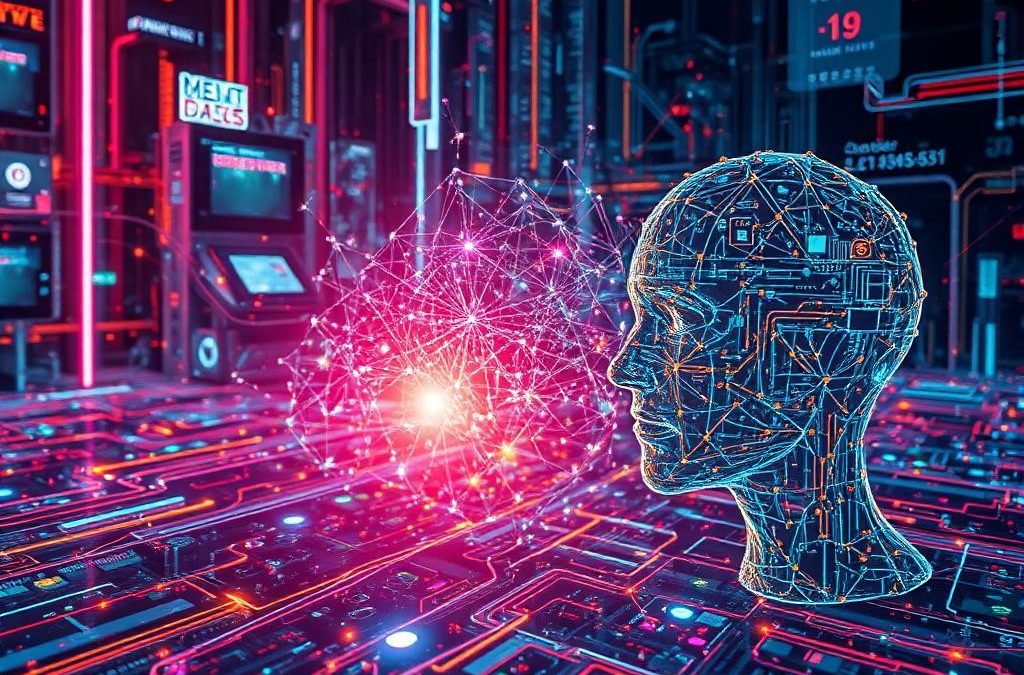Deep learning has revolutionized artificial intelligence while enabling advancements in image recognition, natural language processing and many more. However as the problems grow complex standalone approaches showed its limitations. Hybrid models and its integrating diverse techniques are the future which offers improved accuracy, robustness and broader applicability. Through this blogs we will explore hybrid models and their applications and how institutions can incorporate them into their course curriculum like Bachelor of Computer Applications (BCA).
Enhancing Model Performance through Collaboration
Hybrid models combine multiple machine learning techniques to leverage their strengths. They improve accuracy by integrating diverse methods while enhancing robustness by offsetting individual model weaknesses and expand applicability to solve broader challenges by using specialized techniques. For instance a hybrid model might combine CONVOLUTIONAL NEURAL NETWORKS (CNNs) for feature extraction with RECURRENT NEURAL NETWORKS (RNNs) for sequential data analysis or mix supervised learning with reinforcement learning for adaptive systems.
Types of Hybrid Models Dominating AI
Some hybrid models integrate deep learning with traditional machine learning , such as using CNNs for feature extraction and support vector machines (SVMs) for classification. Other hybrid models involve multi-model deep learning while combining CNNs for image data with RNNs for time-series analysis. Hybrid systems can also blend deep learning with rule-based systems, such as integrating neural networks with expert systems for tasks requiring reasoning. Additionally deep learning combined with reinforcement learning enables adaptive decision-making .
Applications of hybrid models
The applications of hybrid models span in multiple domains.
- In healthcare, they combine data imaging with patient history for more accurate diagnoses.
- In natural language processing (NLP), hybrid systems integrate deep learning with rule-based methods for tasks like sentiment analysis and question answering.
- Autonomous vehicles benefit from hybrid models that blend object detection with reinforcement learning for safer navigation
- . Fraud detection systems leverage these models by combining anomaly detection with rule-based algorithms to identify suspicious transactions.
- Hybrid approaches also play a crucial role in education, where adaptive learning platforms integrate them to personalize content delivery for students of various courses such as BCA .
Empowering Students with Cutting-Edge Knowledge
Students at private institutions like JIMS, Vasant Kunj- II can greatly benefit from learning about hybrid models. These techniques help students in courses like BCA with skills by equipping them with diverse algorithmic knowledge. They enhance relevance by exposing students to real-world applications such as predictive analytics and adaptive systems. Moreover hybrid models inspire innovative research opportunities while encouraging students to explore new combinations of methodologies.
By gaining expertise in these cutting-edge technologies, students improve their employability and readiness for industry roles.
Incorporating Hybrid Models into Education
Incorporating hybrid models into the BCA curriculum can be achieved in various ways. A foundational course on hybrid models could teach them concepts, architectures and practical applications. Hands-on projects such as building an image classifier using CNNs and SVMs or developing a Chatbot combining deep learning and rule-based systems provide students with practical experience. Hybrid model concepts can also be integrated into existing courses like AI, ML and Data Science, where students can learn about techniques like reinforcement learning combined with neural networks.
Collaborative research initiatives further enhance understanding thus enabling students to work on projects with novel applications of hybrid models. Industry exposure through internships ensures that students gain practical experience in real-world hybrid systems.
A Practical Example: – Consider a system designed to predict student performance. By collecting data on attendance, assignment scores, and extracurricular participation, a hybrid model could combine deep learning to identify patterns in student behavior with a rule-based system to flag students at-risk. The outcome would be a comprehensive system delivering actionable insights for educators.
Challenges and Future of Hybrid Models
While hybrid models offer numerous advantages, they also present challenges. Designing and maintaining hybrid systems requires advanced knowledge, and their effectiveness often depends on large datasets. Integration issues, such as ensuring compatibility between components, can complicate their development. However, future advancements promise to address these challenges. Automated tools like AutoML may streamline the design of hybrid systems, while optimizing hybrid models for edge computing could enable real-time deployment. Expanding their interdisciplinary applications in areas like art, sociology, and sustainability presents exciting possibilities.
Preparing for a Hybrid Future
Hybrid models are the future of deep learning which blend strengths while tackling complex challenges. Best Delhi NCR Institutes like JIMS Vasant Kunj II can lead the way by integrating these models into the BCA curriculum while equipping students with the skills to excel in technology-driven careers. The future is hybrid and it is time to embrace it.
Blog by
Mr. Abhinav Nirwal
Assistant Professor
BCA Department
771 words


Very informative blog. Good for the specific queries of Hybrid Models.
#BestBCACOLLEGEINDELHINCR
Excellent information for BCA aspirants.
Very nice blog..!!
Very intruisive and knowledgeable.
Truly said …future of AI or Deep learning is Hybrid model and #BestBCAcollegeinDelhiNCR must update the curriculum with these latest Tech subject.
Very informative and helpful
very informative article
Great learning for BCA Aspirants at @Jims vasantkunj II